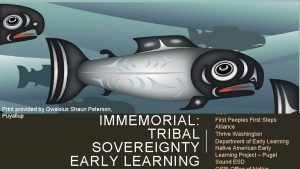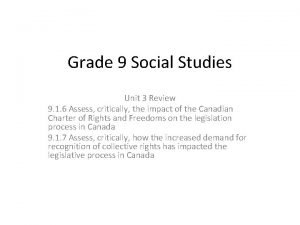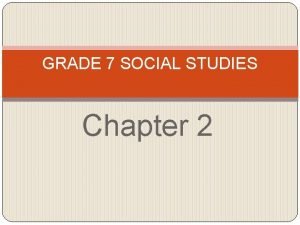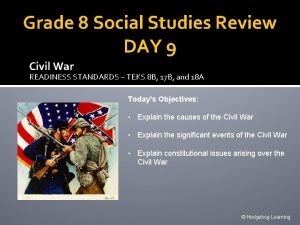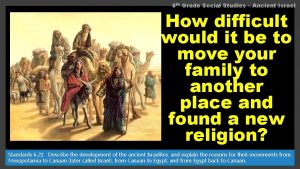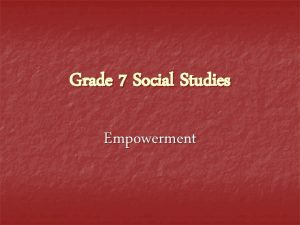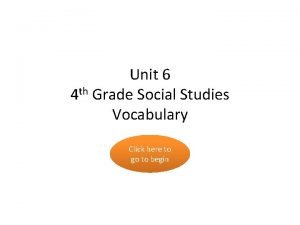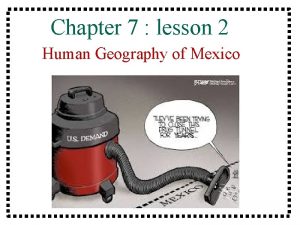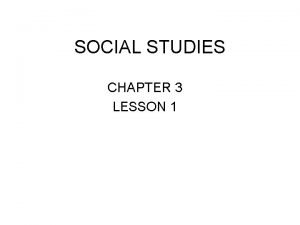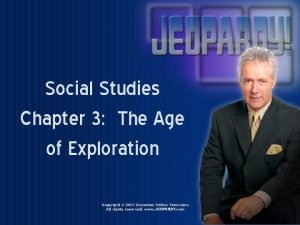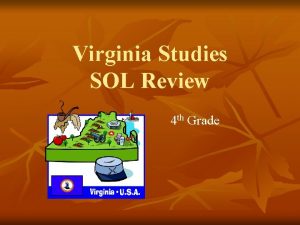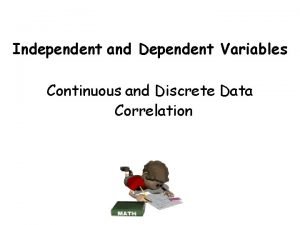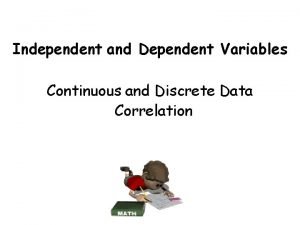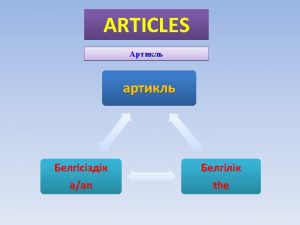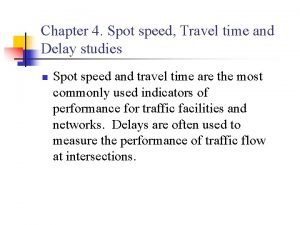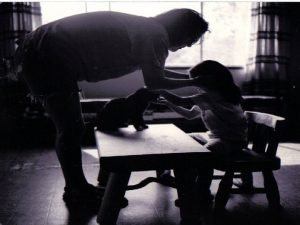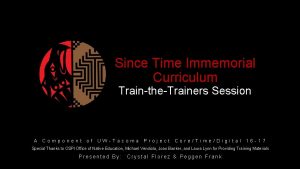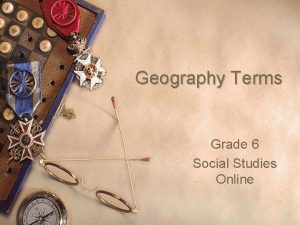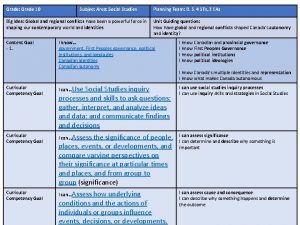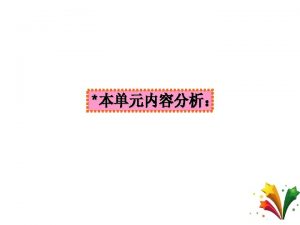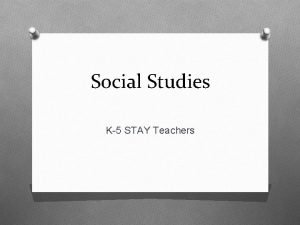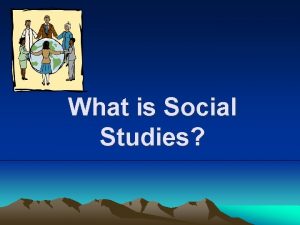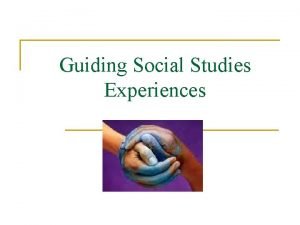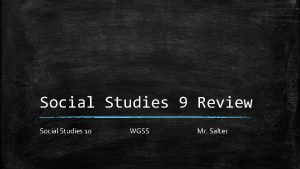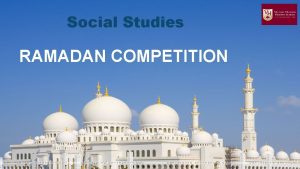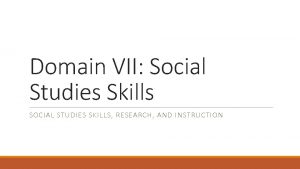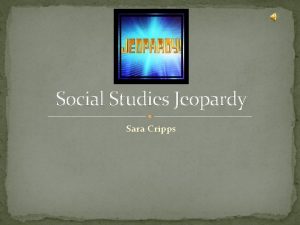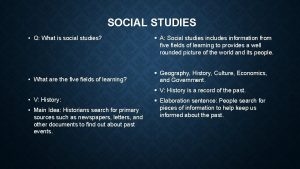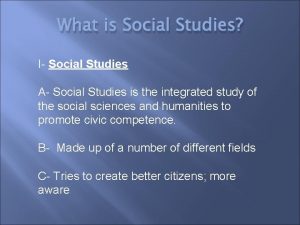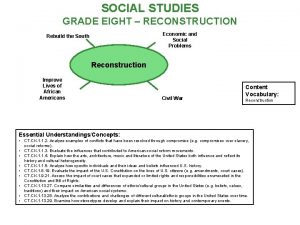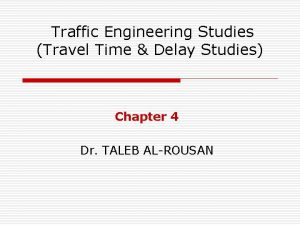GRADE 7 SOCIAL STUDIES Chapter 2 Time immemorial

























- Slides: 25

GRADE 7 SOCIAL STUDIES Chapter 2

Time immemorial means: For as long as anyone can remember in all the stories passed on by the elders.

Aboriginal means: “living in a land from earliest times” There are 3 groups of Aboriginal people living in Canada today.

THE INUIT: The INUIT live north of the TREE LINE ( where the climate is too cold for trees to grow) Labrador Inuit and Quebec Inuit are two examples Their main resources were seal, caribou, and fish

FIRST NATIONS: Refers to all the Aboriginal people living in the rest of the land that is now Canada Mi’kmaq and Maliseet are two examples from the Maritimes

METIS Were the children of European traders and Inuit or First Nations women The Metis today are descendants of these people, and have distinct culture and traditions.

What kind of economy did Aboriginal people have before European people came to North America? They had a PRE-INDUSTRIAL ECONOMY. (they produced their goods by hand using simple tools. )

What were their main needs and wants? They needed food sources They needed materials for build shelter They needed materials to make clothing

How did they get the things they needed and wanted? They used whatever natural resources they could find in their environment They made their own shelters, clothing with whatever could be found, using simple tools They hunted, fished, gathered for food

PRODUCTION: p 28 How did the First Nations and Inuit make things they needed? They made things by hand, using simple tools, mostly stone and bone tools.

2. How did the Innu people learn to use the caribou? They used the meat for food, the bones for tools, and the hides for clothing, footwear, and shelter.

3. Why would the people travel to different places? Give examples. They would go to different regions to hunt, to fish, to gather things. Fishing in lakes, rivers, along the coast, mostly in summer Hunting following the caribou herds Gathering things in season

4. What did the men and women do? Men would hunt and women would prepare the meat and hides.

A Part of Nature: Although there were some differences in traditional economies from region to region, all First Nations and Inuit societies have similar beliefs about use of : Land natural resources

2. Explain what they believe: People and things in nature are part of a natural system Resources must be used wisely to ensure survival of future generations Respect is given to animals when they are hunted ex. “Mukushan”

3. How do the Innu show respect and thanks after a caribou hunt? They have a special fest called “Mukushan” to honor the spirit of the caribou.

DISTRIBUTION p 30 Everyone helped with production and shared what was produced In some regions there were clear boundaries between First Nations, in others they moved freely and shared resources Some First Nations traded with each other.

PRIVATE OWNERSHIP: The First Nations people did NOT have a tradition of private ownership In some societies, certain groups had the right to harvest or hunt in particular areas, but they did not consider this to be “owning” the land. Land was theirs to use and care for

NEWCOMERS: page 31 Summary 1. European nations and European individual people were looking for more land to own 2. Some Europeans believed their culture and religion was superior and should be spread around the world. 3. They were looking for ECONOMIC OPPORTUNITIES like furs, seal oil and pelts, fish, timber, minerals to sell in Europe

Production: Everything was made by hand, using basic tools (metal made things easier) • Ex: • Blacksmith • Bakers • coopers • Weavers etc.

Why was the idea of private ownership so important to them? In Europe, all the land was owned by wealthy people, most others rented the land lived in poverty Main goal: To own land: was a way to improve their economic situation

What economic opportunities did they find in North America? They found a rich supply of fish, furs from animals, timber, seals, minerals The Three Key Resources they wanted were FISH FURS TIMBER

THREE KEY RESOURCES FISH First resource noticed by Europeans Because of religious custom, Europeans needed a lot of fish for their diet English developed the best system for catching/processing the fish to export Called the “fishing room” People from many countries came to fish This was MIGRATORY Around the 1700 s fishers began to stay year round

FURS In demand in Europe for making hats Traders gave FN blankets, firearms, for their furs Used the FN trade network First came only in summer but gradually stayed and settled

TIMBER Forests of Europe had been cut down Thick, tall trees in NA were perfect for building ships and boats
 Since time immemorial early learning curriculum
Since time immemorial early learning curriculum Grade 9 social studies chapter 3 test
Grade 9 social studies chapter 3 test Chapter 2 social studies grade 7
Chapter 2 social studies grade 7 Meaning of living together in social studies
Meaning of living together in social studies Moral social and cultural studies grade 9
Moral social and cultural studies grade 9 Worldviews grade 8 textbook
Worldviews grade 8 textbook Day 10 grade 8 social studies staar review
Day 10 grade 8 social studies staar review Nsms 6th grade social studies.weebly
Nsms 6th grade social studies.weebly Grade 7 social studies empowerment
Grade 7 social studies empowerment 8th grade social studies
8th grade social studies 4th grade social studies vocabulary
4th grade social studies vocabulary Paradigm shift from women studies to gender studies
Paradigm shift from women studies to gender studies Chapter 7 lesson 2 social studies
Chapter 7 lesson 2 social studies Social studies chapter 3
Social studies chapter 3 Social studies chapter 3
Social studies chapter 3 Example of elapsed time
Example of elapsed time Apa itu social thinking
Apa itu social thinking Social thinking social influence social relations
Social thinking social influence social relations Va studies 4th grade sol review
Va studies 4th grade sol review Continuous data
Continuous data Discrete variables
Discrete variables He studies grade
He studies grade Business studies grade 11 2020 term 2 sba task presentation
Business studies grade 11 2020 term 2 sba task presentation A student's grade depends on how much she studies
A student's grade depends on how much she studies Physician time studies
Physician time studies Travel time and delay studies
Travel time and delay studies
